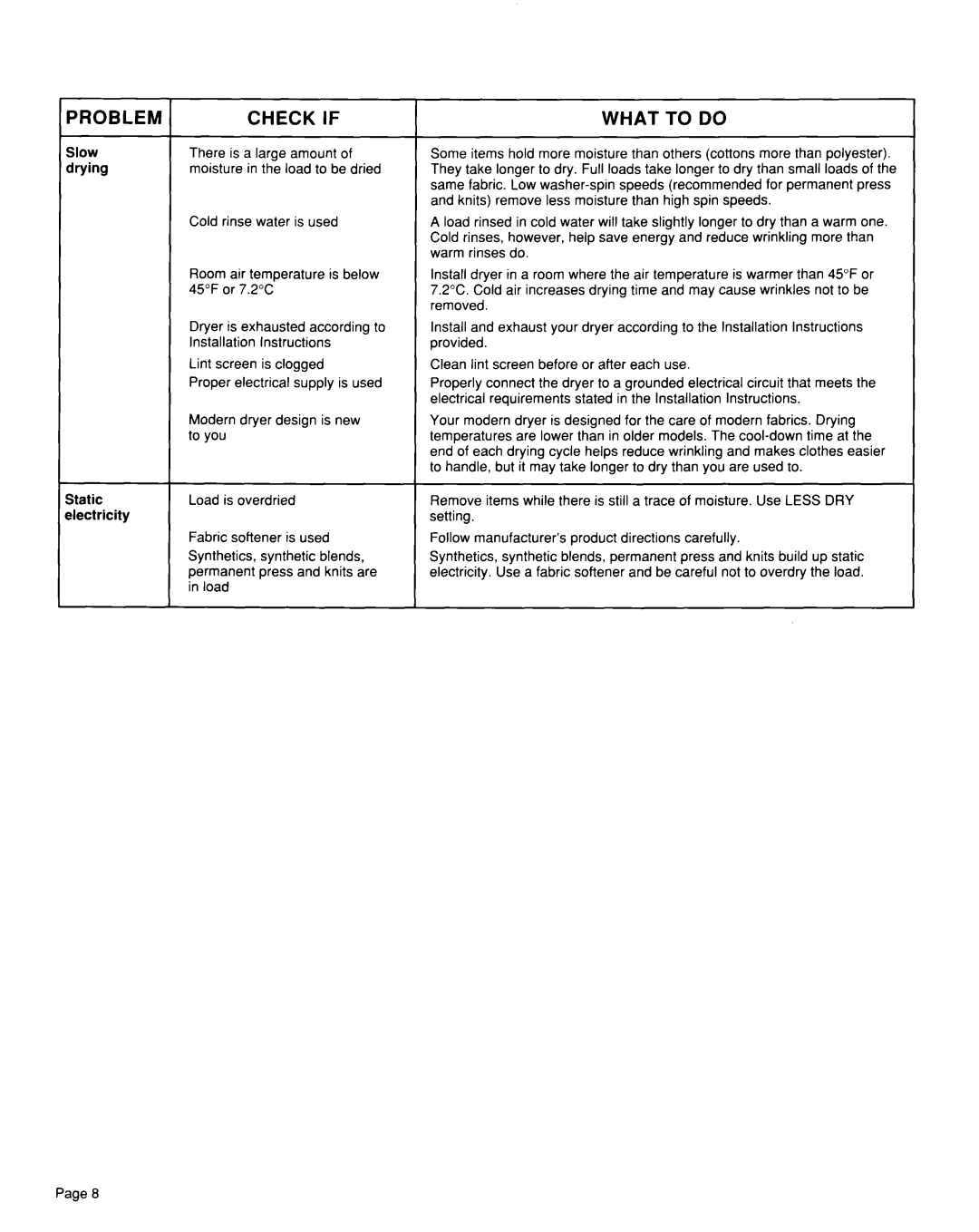TEDL600W, TGDL600W specifications
The Whirlpool TGDL600W and TEDL600W are innovative tumble dryers designed to enhance your laundry experience with their user-friendly features and advanced technologies. Both models embody Whirlpool's commitment to performance and efficiency, making them suitable options for families and individuals looking for reliable drying solutions.One of the standout features of the TGDL600W and TEDL600W is their generous load capacity. With the ability to accommodate large volumes of laundry, these tumble dryers ensure that you can tackle multiple loads in one go, thus saving valuable time and energy. This is particularly beneficial for busy households where laundry can quickly accumulate.
The energy efficiency of both models is noteworthy. They are designed to consume less electricity, which not only benefits the environment but also reduces ongoing utility costs. With high energy ratings, these dryers help users maintain a sustainable approach to household chores while still achieving optimal drying results.
A key technology integrated into the TGDL600W and TEDL600W is the advanced sensor drying system. This innovative feature detects the moisture level within the drum and automatically adjusts drying times accordingly. This ensures that clothes are dried thoroughly without the risk of over-drying, which can lead to wear and tear on fabrics.
Both models also come equipped with a variety of drying programs and settings tailored to meet different fabric care needs. From delicate items to heavier fabrics, users can select the appropriate program to ensure their laundry receives the best possible treatment. Additionally, intuitive controls and clear displays make it easy to navigate through the settings.
Another characteristic that enhances user convenience is the option for reverse tumble action. This feature helps to reduce clumping and tangling of clothes, promoting even drying and making it easier to unload freshly dried items.
The design of the TGDL600W and TEDL600W is both stylish and functional, allowing them to seamlessly integrate into any laundry space. Their compact size makes them ideal for apartments or homes with limited space, while still providing the performance expected from a larger machine.
In summary, the Whirlpool TGDL600W and TEDL600W are exceptional tumble dryers that combine efficiency, advanced technology, and thoughtful design. Their features cater to the needs of modern households, making laundry day a more manageable task. Whether you have a busy family or are simply looking for a dependable drying solution, these models deliver reliable performance.

